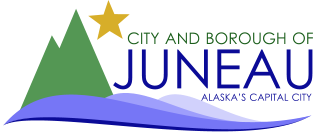
Don’t wait for a warning. Take action now by being prepared.
Whether it’s a missile, a tsunami or a house fire, the best way for Juneau residents to reduce their vulnerability to disasters and emergencies is by being prepared. That includes being aware and educated of the hazards that exist in Juneau – like earthquakes, avalanches, severe weather, tsunamis, landslides and floods to name a few – and their proximity to your home and work place.
Juneau residents will hear about major emergencies through the Emergency Alert System (EAS), accessible on TV, radio, VHF Channel 16, NOAA Weather Radio and Wireless Emergency Alerts. Keep in mind that mobile phone systems can get bogged down or fail completely in emergencies, or power can be knocked out. Having a NOAA Weather Radio is the best way to get EAS messages. A NOAA Weather Radio is a battery backed up radio that sits on a charger. If the EAS is triggered, it turns on automatically even if the power is out. But, when it comes to emergencies, “the event you need to worry about is the one you won’t get a warning for,” City and Borough of Juneau Emergency Programs Manager Tom Mattice said.
For example, if Juneau experiences an inshore local tsunami caused by an underwater landslide, you will not get a warning. That type of tsunami is a short duration event that doesn’t provide any time for warning. Mattice said people should find out if their home is situated in the Inshore Tsunami Zone (find the map under Current Issues on juneau.org) and, if it is, to take the proper precautions: If an earthquake occurs that is longer than 20 seconds, or if it is strong enough to knock you down, immediately seek higher ground.
Being prepared for any type of emergency is a product of personal decision and motivation. How prepared are you for an event that cuts off power, phone and transportation for several days? Sometimes the simplest steps can make a big difference during a crisis. Here are some suggestions:
- Work with your family to create a disaster plan. Decide how you will react, where family members should meet, and what items you might need.
- Put together a Go Bag that has essentials, like prescriptions, eye glasses, extra clothing and food, and other things that are specific to you and your family.
- Assemble a home disaster kit with such items as flashlights, batteries, canned food, blankets, and other items you might need in a disaster. Every home should have seven-days-worth of food and water on hand.
- Learn to shut off power, gas and water to your home.
- Ensure that pets and livestock will be cared for in a disaster. Keep food and supplies for your pet in your home disaster kit or Go Bag.
- Establish a network of friends and neighbors who are willing to work together in a disaster.
If each household is prepared for a disaster, the community as a whole will be able to recover more quickly. CBJ offers free Community Emergency Response Team trainings that teach you these valuable skills and more. To learn about the program, contact Emergency Programs Coordinator Michelle Brown at 586-0371 or [email protected]. Also, look for more helpful information on the Emergency Management page on juneau.org or ready.alaska.gov.
Aside from the Emergency Alert System, CBJ is currently in the process of setting up a local emergency notification system that people can sign up for. The system would be similar to CBJ’s Air Emergency Notification Text service that’s currently in place for Mendenhall Valley residents. Look for more information on juneau.org by March 1. CBJ Emergency Programs Manager Tom Mattice can be reached at 586-0419 or [email protected].
